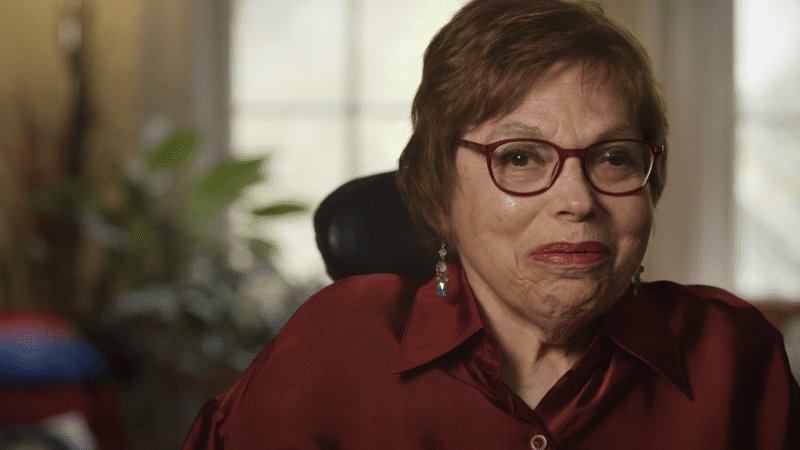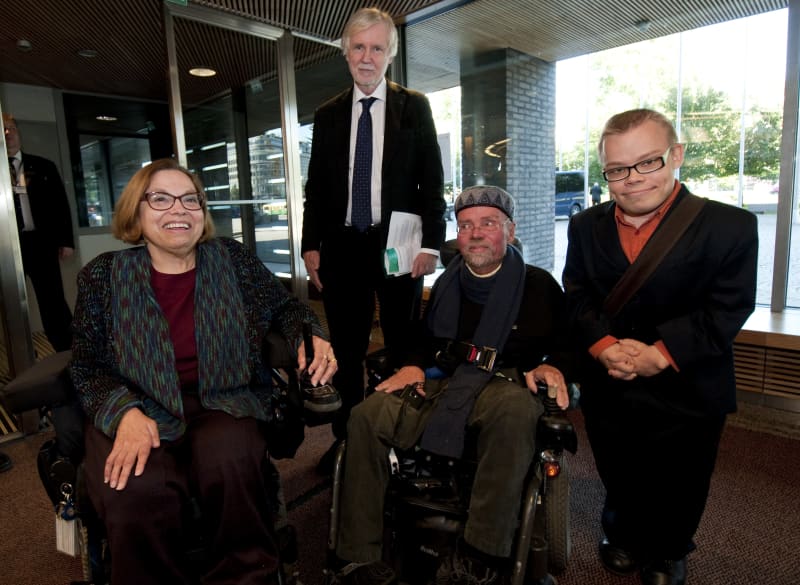
The US human rights campaigner also visited Finland frequently. “When you meet a person who makes you all huffy and puffy, it’s pretty damn impressive,” says para-athlete Reeta Lindeman of meeting her idol.
These things made the fiery fighter an icon.
1. The sitting duck that changed the world
In 1977, Heumann led a 26-day sit-in in a San Francisco government building. People with disabilities occupied the building and demanded attention to the stalled US disability legislation.
Several attempts were made to break the strike. When the authorities cut off the electricity and telephone lines in the building, the demonstrators communicated with the outside world, including in sign language.
In a nutshell, the idea behind the ADA is that discriminating against people on the basis of disability is prohibited by law. In practice, the law in the United States means, for example, that state-funded entities such as public transport, hospitals and schools must be built to be accessible.
– The importance of this legislation has been reflected in the lives of tens of millions of people, even though its passage was based on the activism of a small group, says Tuure.
The law came into force more than a decade after the sit-in strike in 1990, but the occupation is considered a significant part of the history of disability rights.

2. The main character in an Oscar-nominated documentary
Heumann is one of the protagonists of the documentary film *Crip Camp: A Disability Revolution*. The documentary tells about the camp school that shaped the lives of disabled teenagers in the 1970s and the political careers of the people who met there.
Dokkari received an Oscar nomination in 2020. For the first time ever at the Oscars, a wheelchair was able to go on stage on a ramp under the eyes of the audience and not just from the back.
– In this respect, the effect has been spot-on, because this year only the stairs led to the stage, but it showed that the barrier-free award ceremony, and more broadly society, is a choice.
On a more abstract level, the significance of the documentary, according to Myllyaho, is that it shows disabled people making their own history, not disabled people as objects of care and treatment for disabled people.
– In the fact that Crip Camp was nominated at a gala where traditionally non-disabled actors are rewarded for portraying disabled people, the seed of the revolution sprouted, Myllyaho says.
In addition to politics, the best parts of the film are the communal, everyday moments of the camp, such as the description of how the camp schoolchildren deal with the satia epidemic that resulted from the sexting of tyrants. The scene in question can be viewed on YouTube.
3. A tough guy who had a special relationship with Finland
Heumann is often described with the word *badass*, tough. According to Tuomas Tuure of Abilis, it is related to the activist’s attitude that he dared to be difficult and demanding.
– In the United States, the disability movement is much more political and aggressive, militant than in Finland. In activism there, lessons have been learned from the civil rights movements of blacks and gays, says Tuure.

According to Tuuren, the two met for the first time already in the early 1970s at a summer camp for young disabled people in Norway.
– They had a very unique chemistry. Kalle was initially a more reserved Finn and Judith a very extroverted American, but they had a unique relationship, says Tuure.
Both activists were united by an uncompromising attitude that disabled people influence their own lives instead of non-disabled people acting or deciding for them.

4. Inspiring role model brought people together
Heumann was a charismatic speaker who rallied the disabled community everywhere he traveled.
Heuman visited Finland many times.
– At the time, I was a mother of small children and in quite a toddler fog. I wonder what I have to offer, I can’t go and sit on the steps of the parliament building for a week to show my opinion.
However, Heumann created a warm, communal and gregarious atmosphere for the event and convinced Lindeman that he would find his own way to influence things. Today, Lindeman does activism on social media, in working life and as an entrepreneur. Heumann’s influence as a role model has been great for the para athlete.
– We don’t have enough examples of what you can do and achieve as a disabled person. When you meet a person who has put the wind in the ground and the hörssel, it’s pretty impressive, after all.
